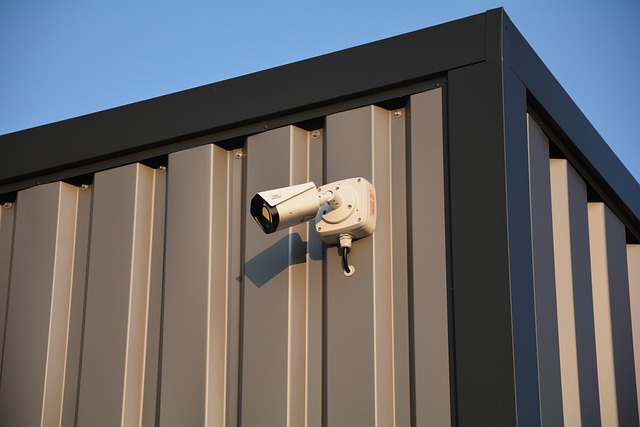License Plate Recognition (LPR) enhances security camera surveillance by automatically reading vehicle license plates, enabling efficient traffic tracking and monitoring. Integrating LPR with security systems provides real-time vehicle data, improving access control and operational efficiency. This technology revolutionizes fleet management, safety protocols, and incident response times. Despite challenges, AI integration and cloud analytics can further improve LPR accuracy and capabilities in various environments.
“License plate recognition (LPR) technology is transforming vehicle tracking, offering unprecedented accuracy and efficiency. This article explores the multifaceted applications of LPR, from its core functionality in identifying vehicle registration details to its integration with existing security camera surveillance systems. We delve into how this technology enhances safety measures, improves traffic management, and presents a powerful tool for law enforcement. Additionally, we examine challenges faced and future prospects, including advancements in AI and data privacy considerations, as LPR continues to evolve.”
Understanding License Plate Recognition Technology
License Plate Recognition (LPR) technology is a sophisticated system that enables automated reading and decoding of vehicle license plates, making it an invaluable tool for vehicle tracking and traffic management. This advanced technology utilizes computer vision and image processing algorithms to capture, analyze, and identify characters on license plates, even under varying lighting conditions and in different plate formats.
LPR systems are integrated into security camera surveillance networks, enhancing their capabilities. By analyzing video feeds from security cameras, LPR technology can accurately extract vehicle registration details, allowing for efficient tracking, monitoring, and enforcement of traffic regulations. This real-time data enables authorities to respond swiftly to various scenarios, including traffic incidents, thefts, or unauthorized access into restricted areas.
Integrating LPR with Security Camera Surveillance
Integrating License Plate Recognition (LPR) technology with existing security camera surveillance systems offers a powerful solution for enhanced vehicle tracking and access control. This integration allows for real-time monitoring, providing security personnel with valuable data to identify and track vehicles entering or within a secured area. By combining advanced computer vision algorithms with the traditional visual feed from security cameras, LPR systems can accurately capture and read license plates, enabling efficient identification and verification processes.
This symbiotic relationship between LPR and security camera surveillance streamlines vehicle management, improves safety protocols, and facilitates faster response times during incidents. The seamless flow of data allows for dynamic risk assessment, enabling security teams to proactively address potential threats or unauthorized access attempts. Moreover, the integration enhances overall operational efficiency by automating routine tasks, such as logging vehicle entries and exits, thereby freeing up resources for more strategic security measures.
Enhancing Vehicle Tracking and Safety Measures
Vehicle tracking systems have evolved significantly with the integration of license plate recognition technology. This advanced capability enhances traditional security camera surveillance by providing accurate and real-time vehicle identification, allowing for more efficient fleet management and improved safety measures. By analyzing vast amounts of data from license plates, these systems can track vehicles across various locations, enabling better route optimization and proactive response to emergencies.
Moreover, the implementation of license plate recognition improves road safety by monitoring traffic patterns, detecting unauthorized vehicles in restricted areas, and facilitating faster incident response times. This technology acts as a powerful tool for law enforcement agencies, transportation authorities, and fleet operators, ensuring better control over vehicle movements and enhancing overall security.
Challenges and Future Prospects of LPR Systems
Despite significant advancements, License Plate Recognition (LPR) systems face several challenges. One major hurdle is the variability in plate styles and formats across regions, which can reduce system accuracy. Additionally, poor image quality due to low lighting conditions, angle variations, or obstructions poses another significant challenge. These factors often lead to misreadings, false positives, or negatives, impacting the overall efficiency of vehicle tracking.
Looking ahead, future prospects for LPR systems are promising, driven by advancements in computer vision and deep learning technologies. Integrating security camera surveillance with AI-powered LPR can enhance accuracy rates through continuous learning and adaptation to new plate designs. Moreover, cloud-based data sharing and analytics can further improve tracking capabilities by correlating vehicle movements across different locations and timeframes.
License plate recognition (LPR) technology has emerged as a powerful tool for vehicle tracking, offering enhanced safety measures and efficient traffic management. By seamlessly integrating LPR with existing security camera surveillance systems, authorities can improve incident response times, facilitate accurate forensical investigations, and optimize parking management. Moving forward, addressing the challenges of data privacy and system accuracy will be key to unlocking the full potential of LPR systems, making them an indispensable asset in the realm of modern traffic intelligence and urban safety. With continuous advancements in technology, LPR is poised to revolutionize security camera surveillance, ensuring safer roads for all.
